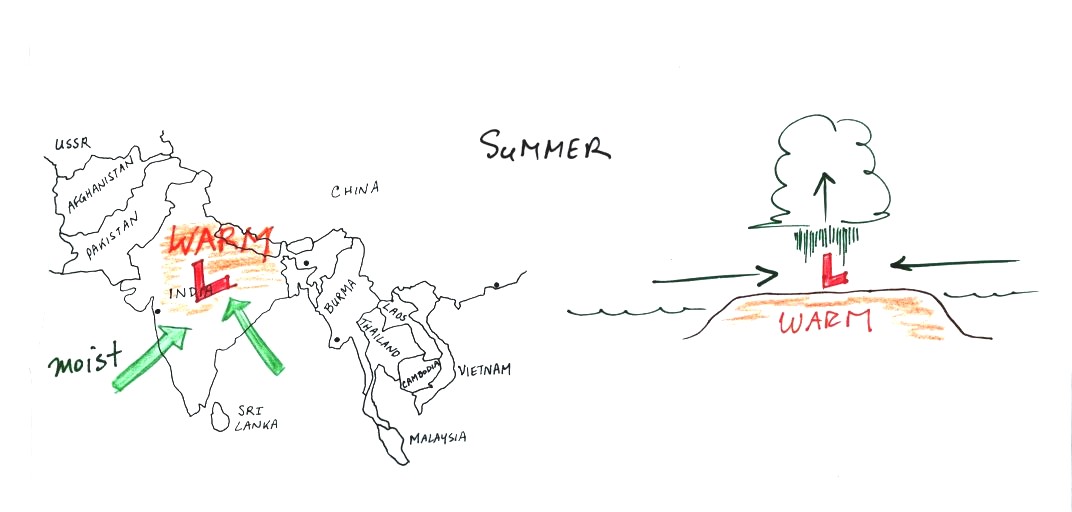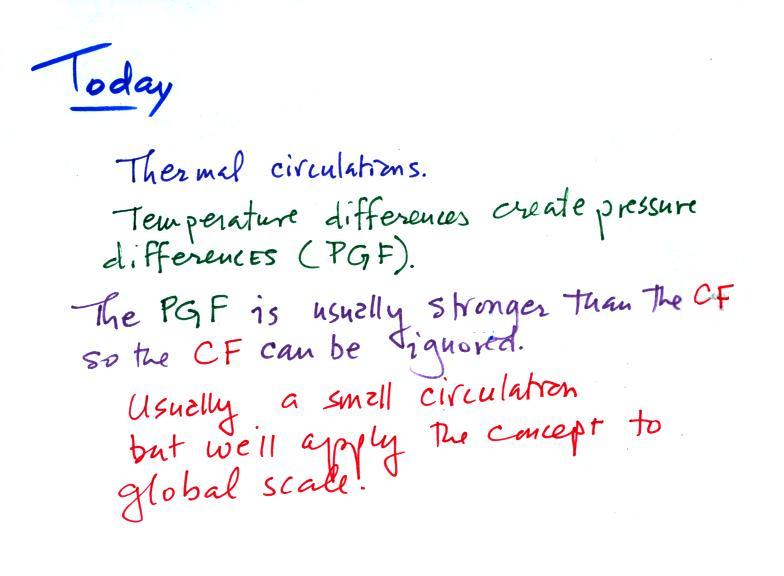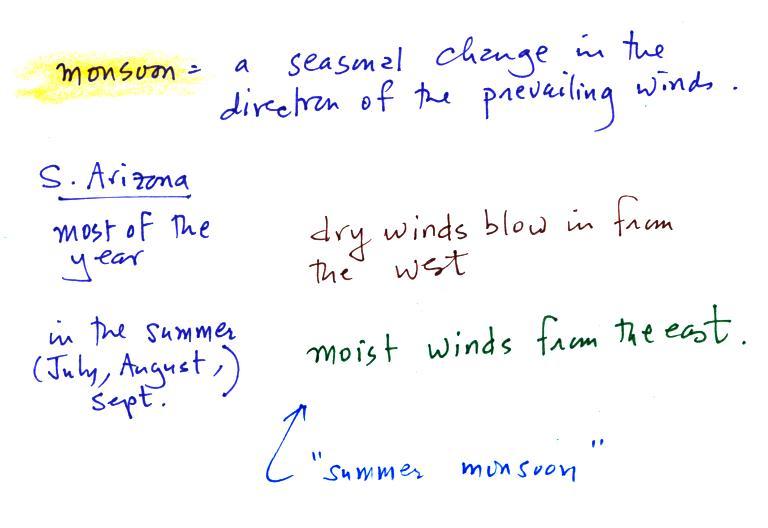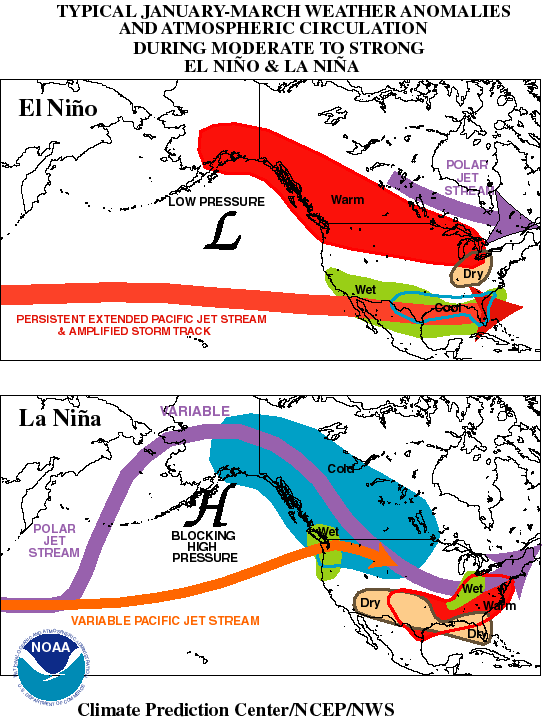Wednesday Apr. 16, 2014
The week before Easter seemed like a good occasion to play some
gospel music in class. You heard "Soldier",
"Amazing
Grace" and most of "Way Down in
the Hole" featuring the Blind Boys of Alabama.
The 1S1P Koppen Climate Classification reports are about half
done. I hope to be able to return them all on Friday.
The 1S1P Regional Winds and Foucault Pendulum reports were
collected today. I'm going to try to get all the Rainbow,
Mirage, and Green Flash reports graded first so it might be a
while before you get today's report back.
There is a new 1S1P topic
on Atmospheric Stability now available. It is another
worksheet rather than a report. The completed worksheets are
due next Monday.
All of the Scientific Paper and Book reports turned in last week
have been graded. Revised reports (if you want to do one,
they aren't required) are due by Wed., Apr. 30. Getting them
in before that would be helpful to me. Please return the
original report with your revised report.
It's time for the Great Toilet Flushing
Experiment/Optional Assignment. You may have heard that
water draining from a toilet or a sink spins one way in the N.
Hemisphere and in the opposite direction in the S.
Hemisphere. That is something we can try to check out
for ourselves. Here's
the assignment.
Here's a picture of the "Old Sow" whirlpool in
the Bay of Fundy and apparently the largest whirlpool in the
Western Hemisphere (source).
Next it was onto one of the main topics of the day: the
development
of a thermal circulation.
Differences
in temperature like you might find between a
coast and the ocean or between a city and the surrounding country
side can create horizontal pressure differences. The horizontal
pressure gradient can then produce a wind flow pattern known as a
thermal circulation.
When dealing with these usually small scale circulations, the
pressure gradient force is often so much stronger than the
Coriolis force that the Coriolis force can be ignored.
We will learn how thermal
circulations develop and then apply to concept to the
earth as a whole in order to understand large global scale
pressure and wind patterns. You really can't ignore the Coriolis force in a situation
like that so the concept is not really applicable on that
scale. But much of what it predicts is actually found in
the real world. That's why we'll cover and study this
topic.
Thermal Circulations
You'll find this discussed
on p. 131 in the photocopied Class Notes.
The figures below are more
carefully drawn versions of what is in the ClassNotes.
The picture shows a sea coast. There aren't any
temperature differences yet in this picture (both the ocean
and the land are shaded green), so the pressure at the ground
and above the ground are the same over the land and over the
ocean.
A beach will often become much warmer than the nearby ocean
during the day (the sand gets hot enough that it is painful to
walk on in bare feet). The ocean has higher specific heat, is much
harder to warm, and won't change temperature much during the
day. The warm ground will warm the air above. Pressure
decreases more slowly as you move upward through warm low density
air (that's something we covered early in the semester). As
you move from the ground to the level of the green line in the
picture above pressure decreases 90 mb in the warm air and a
little more, 100 mb, in the cooler denser air over the ocean.
Here's another way of arriving
at the same result.
The layer of warm air on the left expands,
pushing the 900 mb pressure level to a higher level than it
would normally be found. 910 mb pressure from a little
lower altitude moves in to take its place.

The temperature differences at the ground have created an
upper level pressure gradient (pressure difference), higher
pressure (910 mb) on the left and lower pressure (900 mb) on the
right. The resulting pressure gradient force (PGF) causes
air to start to blow from left to right.
The upper level winds (which remove air from the left side of
the picture and add it to the right) will then affect the
surface pressure pattern.
The sea level pressure is
determined by the weight of the air overhead. Air leaving
the left side of the picture will lower the surface pressure
(from 1000 mb to 990 mb). Adding air aloft to the right
side of the picture will increase the surface pressure (from
1000 mb to 1010 mb). Surface winds will start to blow from
right to left.

You can complete the circulation
loop by adding rising air above the surface low pressure at left
and sinking air above the surface high at right. The
surface winds which blow from the ocean onto land are called a
sea breeze (the name tells you where the winds come from).
Since this air is likely to be moist, cloud formation is likely
when the air rises over the warm ground. Rising air
expands and cools. If you cool moist air to its dew point,
clouds form.
Here's a short cut that will allow you to quickly figure the
directions of the winds in a thermal circulation without going
through a long-winded development like we just done. Just
remember that
warm
air rises
Draw in a rising air arrow above the warm part of the
picture, then complete the loop.
At night the ground cools more quickly than the ocean and
becomes colder than the water (the water temperature didn't change
at all in the picture below).
What would you expect to find at
night? You don't see the word warm anywhere in the
picture. But the cool (green) ocean water is warmer than
the cold (blue) land surface. So draw the rising air
arrow over the ocean and then complete the loop
The thermal circulation pattern has reversed direction.
Surface winds blow from the land out over the ocean. This is
referred to as a land breeze.
Here is an
additional example of a thermal circulation.

Cities are often warmer than the
surrounding countryside, especially at night. This is
referred to as the urban
heat island effect. This difference in temperature
can create a "country breeze." This will
sometimes carry pollutants from a factory or odors
from a sewer treatment plant located outside the city
back into town.
Here
are a couple of additional examples that weren't
mentioned in class
The Asian monsoon is a large scale circulation pattern and is
much more complex than a simple thermal circulation.
However you can use the thermal circulation concept to get a
general understanding of what to expect at different times of
the year. Before looking at that let's be
clear about the meaning of the term monsoon.
Monsoon just refers to a seasonal change in the direction of
the prevailing winds. Most of the year in Arizona winds
come from the west and are dry. For 2 or 3 months in the
summer winds come from the south and southeast. This
is when we get our summer thunderstorm season or summer
monsoon. The term monsoon is often used (incorrectly) to
refer to the thunderstorms themselves.

In the summer land masses in India and Asia become warmer than
the oceans nearby. Surface low pressure forms over the
land, moist winds blow from the ocean onshore, and very large
amounts of rain can follow. A map view (top view) is shown
at left, a crossectional view is shown at right (it resembles a
large sea breeze).
The winds change directions in the winter when the land
becomes colder than the ocean.
You can also use the thermal circulation to understand some
of the basic features of the El Nino phenomenon (you find a
discussion of the El Nino on pps 135-139 in the photocopied
Classnotes).
First here is what conditions look like in the tropical
Pacific Ocean in normal non-El Nino years (top
and side views again)

Cold ocean currents
along the west coasts of N. America and S. American normally
converge at the equator and begin to flow westward (see top
view above). As the water travels westward it
warms. Some of the warmest sea surface waters on earth
are normally found in the western Tropical Pacific (this is
also where hurricanes are most frequent). A
temperature gradient becomes established between the W. and
E. ends of the tropical Pacific. The crossectional view
above shows the normal temperature and circulation pattern
found in the equatorial Pacific Ocean. You would
find surface high pressure in the east and low pressure in
the west. Note that the wind circulation pattern is
the same as the simple thermal circulation we studied above.
During a La Nina event, waters in the Eastern Pacific are
even colder than normal. This generally produces drier
than normal conditions during the winter in the desert SW.
This was the case last winter. You can read more about La Nina
here.
Every few years El Nino conditions occur and the
cold currents don't make it to the Equator. Warm water
is carried from the western Pacific to the eastern
Pacific. The temperature and pressure basically
reverses itself.

Now surface high
pressure is found in the west and surface low pressure and
rising air is found in the E. Pacific (the reversal in the
surface pressure pattern is referred to as the southern
oscillation). Indonesia and Australia often experience
drought conditions (and devastating wildfires) during El
Nino years. In the desert SW we expect slightly wetter
than normal conditions (perhaps 20% wetter than
normal). Wetter conditions are also found in
California and in the SE US.
Here's a map showing the effects of El Nino and La Nina
conditions on winter weather in N. America (source).
OK back to material that was covered
in class.
We are next going to use the
thermal circulation idea to learn something about global scale
pressure and wind patterns on the earth. Ordinarily you
couldn't apply a small scale phenomenon like a thermal circulation
to the much larger global scale. However if we make some
simplifying assumptions, particularly if we assume that the earth
doesn't rotate or only rotates slowly, we can ignore the Coriolis
force and a thermal circulation would become established.
Some additional simplifications are also made and are listed
below (p. 133 in the photocopied ClassNotes). The figures
are more carefully drawn versions of what was done in class.

Because the earth isn't tilted, the incoming sunlight shines
on the earth most directly at the equator. The equator
will become hotter than the poles. By allowing
the earth to rotate slowly we spread this warmth out in a belt
that circles the globe at the equator rather than concentrating
it in a spot on the side of the earth facing the sun. Because
the earth is of uniform composition there aren't any temperature
differences created between oceans and continents.
You can see the wind
circulation pattern that would develop. You'd
find rising air at the equator (the "warm air rises" shortcut
rule again). Upper level winds would blow from equator
toward the N and S Poles. Winds would converge and sink at
the poles. Surface winds would blow from the poles toward
the equator. The term one cell just refers to the single complete loop in each
hemisphere.
Next we will remove the assumption concerning the rotation of
the earth. We won't be able to ignore the Coriolis force
now.

Here's what a computer would predict you would now
see on the earth. The temperature pattern remains the same
and things are pretty much the same at the equator in the three
cell and one cell models: surface low pressure and rising
air. At upper levels the winds begin to blow from the
equator toward the poles. Once headed toward the poles
the upper level winds are deflected by the Coriolis force.
There end up being three closed loops in the northern and in the
southern hemispheres. There are surface belts of low
pressure at the equator (the
equatorial low) and at 60 degrees latitude (the subpolar
low). There are belts of high pressure (the subtropical high) at
30 latitude and high pressure centers at the two poles (the polar
highs).
We just had time to start to
look at some of the 3-cell model surface features (pressure belts and winds)
in a little more detail. We're doing this because, even
with the unrealistic assumptions of the 3-cell model, much of
what is predicted is actually found on the earth.
Here's the region between 45 S and 45 N latitude viewed from
above. We didn't have time to complete the
picture in class but I've put the complete version below.
There's a lot of information on this picture, but with
a little study you should be able to start with a blank sheet of
paper and reproduce this figure. I would suggest starting at
the equator. You need to remember that there is a belt of
low pressure found there, the equatorial low (pressure
belt). Then remember that the pressure belts
alternate: low pressure at the equator then belts of high
pressure at 30 N and 30 S.
Let's start at 30 S. Winds will begin to blow northward
from High pressure at 30 S toward Low pressure at the equator
(also southward toward low pressure at 60 S latitude). Once
the winds start to blow they will turn to the left because of the
Coriolis force. Up at 30 N winds will also blow southward
toward the equator. They are bent to the right (you need to
turn the page upside down and look in the direction the winds are
blowing). These winds just north and south of the equator
are the Trade Winds
(northeasterly trade winds north of the equator and southeasterly
trades south of the equator). They converge at the equator
and the air there rises (refer back to the crossectional view of
the 3-cell model). This produces a band of clouds that you can
often see at or near the equator on a satellite
photograph. If that link doesn't work try
this one.
The Intertropical Convergence Zone or ITCZ is another name for
the equatorial low pressure belt. This region is
also referred to as the doldrums because it is a region where
surface winds are often weak. Sailing ships would sometimes
get stranded there hundreds of miles from
land. Fortunately it is a cloudy and rainy region so
the sailors wouldn't run out of drinking water (they might well
have run out of rum though).
Hurricanes form over warm ocean water in the subtropics between
the equator and 30 latitude. Because winds at these
latitudes have a strong easterly component, hurricanes, at least
early in their development, move from east to west. Middle
latitude storms found between 30 and 60 latitude, where the
prevailing westerly wind belt is
found, move from west to east.
You find sinking air, clear skies, and weak surface winds
associated with the subtropical high pressure belt at 30 N and 30
S. This is also known as the horse latitudes. Sailing
ships could become stranded there also. Horses were
apparently either thrown overboard (to conserve drinking water) or
eaten if food supplies were running low (Wikipedia
has a different explanation of the origin of the term "horse
latitudes"). Some of the hottest and driest locations on
earth are found near 30 latitude (Tucson is located at 32 N
latitude, so we are strongly affected by the subtropical high
pressure belt).
The winds to the north of 30 N and to the south of 30 S are
called the "prevailing westerlies." They blow
from the SW in the northern hemisphere and from the NW in the
southern hemisphere. The 30 S to 60 S latitude belt in the
southern hemisphere is mostly ocean. Because there is less
friction over the oceans, the prevailing westerlies there can get
strong, especially in the winter. They are sometimes
referred to as the "roaring 40s" or the "ferocious 50s" (the 40s
and 50s refer to the latitude belt they are found in).
And just as you had a cloud chart (shown above) to try to learn
before Quiz #3 we'll have a chart of 3-cell model surface
pressures and winds (below) to learn before Quiz #4. Most
likely you will only have to worry about the features inside the
dotted box below.






















